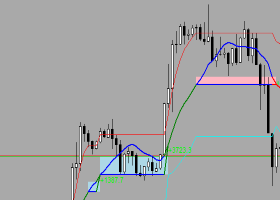
There is no looming physical gold crisis despite lingering rumors, and gold inventories in Comex vaults are well stocked according to two separate reports issued on the same day.
U.K.-based bank Barclays and U.S.-based independent research institution CPM Group both released reports dismissing speculation that there is a physical gold crisis in today’s marketplace as gold held in Comex vaults remains at low levels.
The issue of Comex inventory levels restarted on September 9 after Peter Hambro, chairman and co-founder of Petropavlovsk, a Russian-based mining company, said in an interview with Bloomberg TV that “it’s virtually impossible to get physical gold in London.”
Hambro also reflected upon whether it is better to hold physical gold or paper futures traded on Comex, saying that he worries that the paper market could be stamped on and "people will say ‘sorry we’re going have a financial close-out,’
and it’s all over,” he said in the interview.
“If you want to be in the gold business, you ought to be in the physical business.”
CPM Group noted in its report that although the ratio between open interest in Comex gold futures against physical inventories has declined since March 2014, it is still at historically high levels and represents no weighty risk of imminent problems with deliveries.
“There is no crisis brewing on Comex. In fact, by most measures the Comex is better stocked now than it was for most of the first 30 years of the existence of a gold futures contract on the Comex,” the report said.
The research firm cautioned investors against these false arguments which have been circulating around the marketplace since at least 2013. Although the body sees the yellow metal as an “excellent” investment, the it is not expecting a rally until at least 2017.
“With gold and other precious metals prices having fallen in recent months and remaining weak, a few gold marketing groups have become more desperate about convincing investors to keep buying gold, resorting to misleading market commentary suggesting that gold prices are about to ‘explode’ sharply higher due to fundamental tightness,” the analysts said.
Meanwhile, Barclays provided even more reasons why the rumors were false.
The current ratio signals that total open interest compiles about 200 ounces of gold to one ounce of physical delivery, Barclays said, noting that they believe this does not mirror the physical delivery mechanism in the gold futures market.
Only front-month contracts are eligible for physical delivery, the bank explained. According to their study, “the total curve opening interest has grown relative to front contracts; thus, using total opening interest would overestimate the relevant financial interest.”
Barclays also said that it is necessary to look at how many days there are before first-notice day. Open interest normally falls steeply in the last few weeks before first-notice day, due to market players closing positions to evade the risk of short squeeze.
“Due to a sharp drop in opening interest, the coverage ratio of physical stocks improves dramatically leading up to first-notice day,” the report said.
The last reason Barclays provided was in the types of gold stocks housed in Comex warehouses.
There are two types of stocks: registered and eligible. The bank said that although they are both physically the same, only registered stocks could be delivered. Although registered stocks have dipped, eligible ones remain sizable.
“It is an easy process to assign warrants to eligible stocks, and in
the case of a strong economic incentive, eligible stocks should yield a
quick supply of deliverable stocks,” the bank said.
Several reasons for the decline of registered relative to eligible stocks may be pointed out.
"Since the mid-2000s, global central banks stopped being net gold sellers. European central banks especially ceased to be ready sellers after the central banks’ gold agreement. In addition, EM demand for gold has shifted some metals into Asia, especially with conscious efforts from countries such as China to develop local gold trading hubs.”


